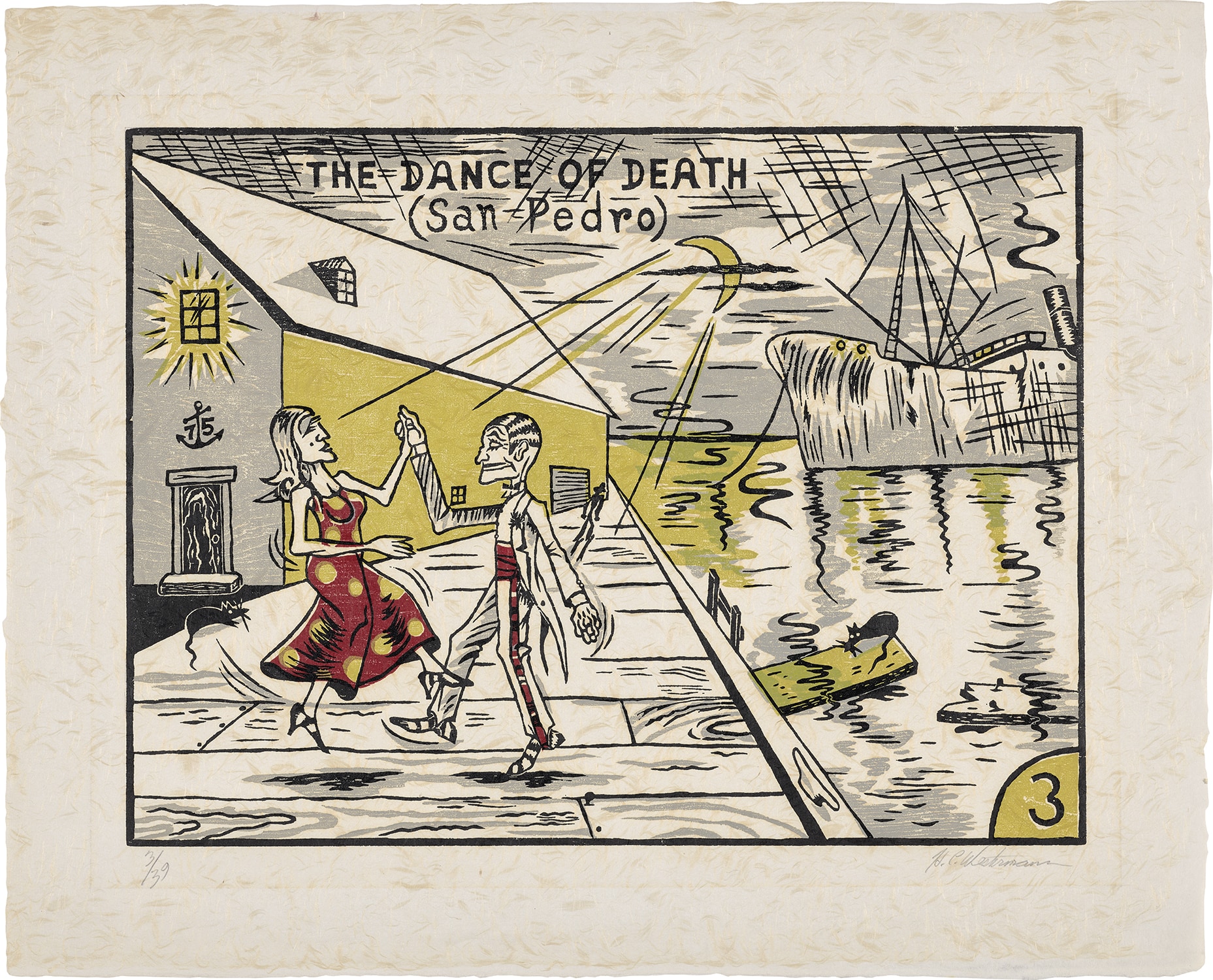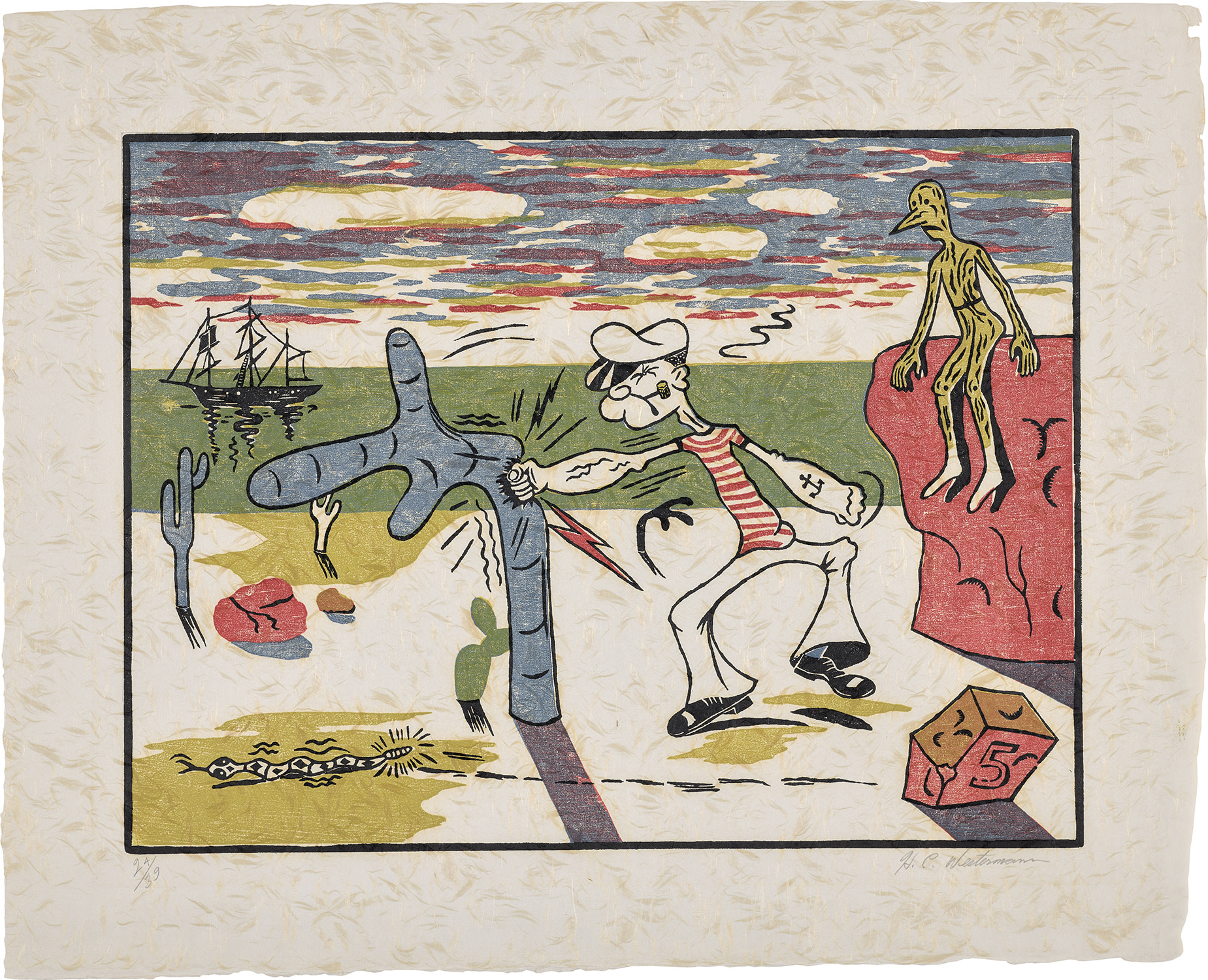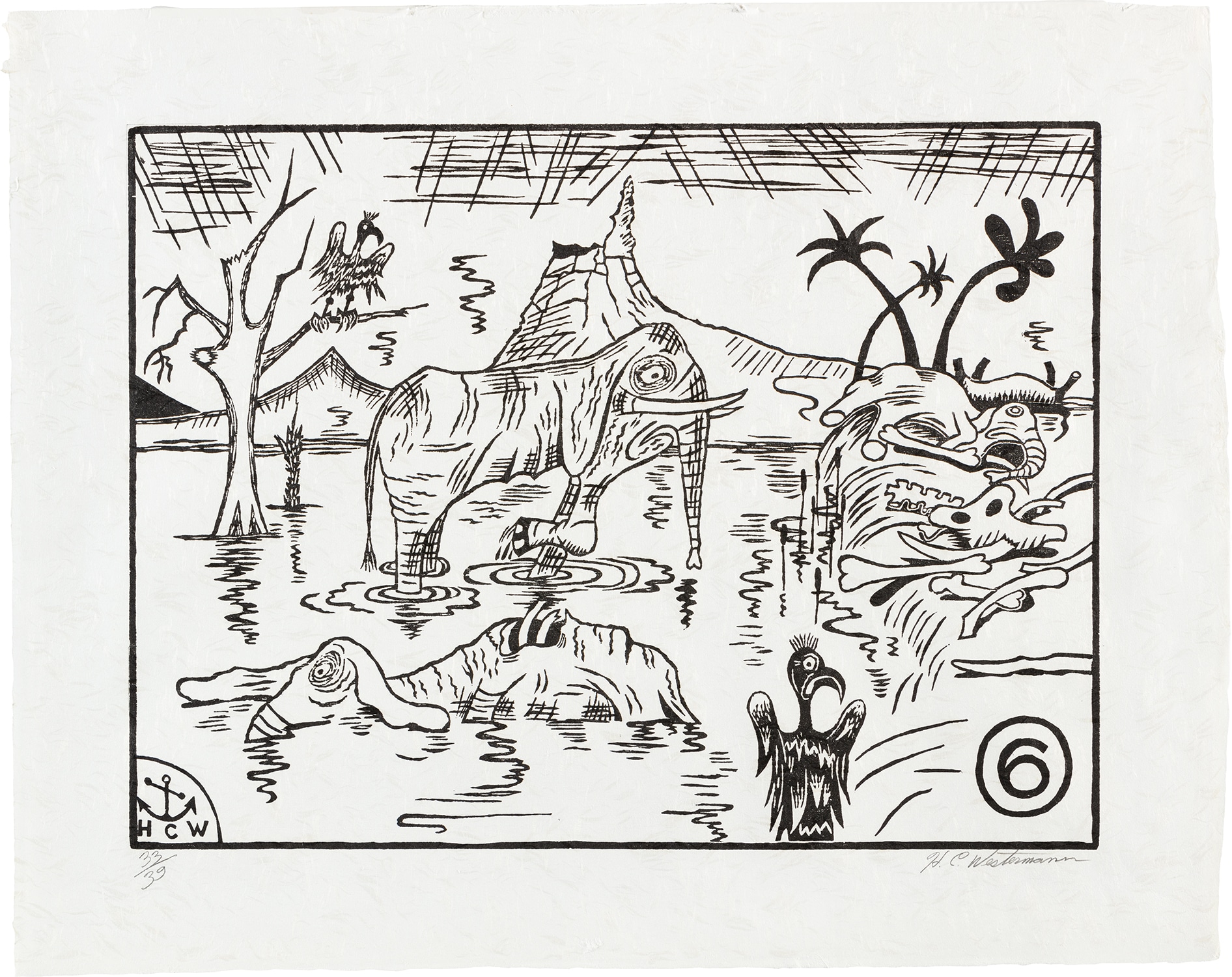















36
H.C. Westermann
The Connecticut Ballroom (A. & B. 22B-H)
1975-1976
The complete set of seven woodcuts in colors, on Natsume #4007 paper, with full margins.
all approx. I. 18 x 24 in. (45.7 x 61 cm)
all approx. S. 24 x 30 in. (61 x 76.2 cm)
all approx. S. 24 x 30 in. (61 x 76.2 cm)
All signed and variously numbered from various edition sizes in pencil, published by the artist, all framed.